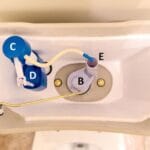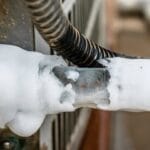Hunter fans are known for their quality and reliability. Yet, remote control issues can still arise.
When your Hunter fan remote stops working, it can be frustrating. Understanding the problem and finding a solution is essential. This guide will help you troubleshoot common remote control issues. Whether it’s a simple battery problem or a more complex issue, we’ve got you covered.
Follow these steps to diagnose and fix your Hunter fan remote. You’ll be back to enjoying a cool breeze in no time. Let’s dive in and solve the mystery of your malfunctioning remote.

Credit: www.hunterfan.com
Common Issues
Having a Hunter fan with remote control is convenient. But sometimes, issues arise. Let’s look at some common problems you might face. Understanding these can help keep your fan running smoothly.
Unresponsive Remote
An unresponsive remote can be frustrating. First, check the batteries. Dead or weak batteries often cause this issue. Replace them with fresh ones. Also, ensure they are inserted correctly.
Next, inspect the remote’s signal. Stand closer to the fan. Sometimes, distance affects the remote’s function. If the problem persists, the remote might need resetting. Turn off the fan at the switch. Wait a few seconds. Turn it back on. This can sometimes reset the remote’s connection.
Fan Not Changing Speeds
If your fan is stuck at one speed, it can be annoying. Start by checking the remote. Ensure you are pressing the correct buttons. The speed buttons might be stuck. Press them firmly to ensure proper contact.
Another reason could be a problem with the fan’s receiver. The receiver is inside the fan. It communicates with the remote. If it’s faulty, the fan won’t change speeds. You might need a professional to check it.
Finally, consider the fan’s settings. Some fans have a pull chain. Make sure it is set to the highest speed. Sometimes, the chain setting interferes with the remote.
Initial Checks
When your Hunter fan remote control stops working, there are a few steps to try first. These initial checks can help identify simple issues that might be easy to fix. Before calling for professional help, make sure to go through these straightforward troubleshooting steps.
Battery Health
Start by checking the battery health. Weak or dead batteries can cause the remote to malfunction. Remove the batteries from the remote and test them with a battery tester. Replace them if needed. Ensure the new batteries are fresh and installed correctly. This simple step can often resolve many issues.
Remote Pairing
If the batteries are fine, the next step is to check the remote pairing. Sometimes, the remote loses its connection with the fan. Refer to the user manual for specific pairing instructions. Typically, you need to press and hold certain buttons on the remote and fan. Follow the steps carefully to re-establish the connection. This can restore proper function.
Resetting The Remote
Having trouble with your Hunter fan remote control? Sometimes, the solution is as simple as resetting the remote. This process can resolve many common issues such as unresponsive buttons or irregular fan operation. Follow these steps to reset your Hunter fan remote control and get your fan back in working order.
Step-by-step Guide
Resetting your Hunter fan remote is quick and easy. Follow this step-by-step guide:
- Turn off the power: First, turn off the power to your fan at the circuit breaker. This ensures safety.
- Remove the batteries: Open the battery compartment on the remote and remove the batteries. Wait for at least 10 seconds.
- Reinsert the batteries: Place the batteries back into the remote. Make sure they are inserted correctly.
- Restore power: Turn the power back on at the circuit breaker.
- Re-sync the remote: Press and hold the ‘Fan’ button on the remote until the fan responds. This usually takes about 5-10 seconds.
Your Hunter fan remote should now be reset and ready to use.
When To Reset
Knowing when to reset your Hunter fan remote is important. Here are some scenarios where a reset might be needed:
- Unresponsive remote: If the remote buttons do not respond, a reset can help.
- Irregular fan operation: If your fan operates erratically, resetting the remote might solve the issue.
- Battery replacement: After changing the remote batteries, a reset can ensure proper functionality.
- After a power outage: Sometimes, power interruptions can disrupt the remote’s connection.
By resetting the remote in these situations, you can often restore normal operation without needing further troubleshooting.

Credit: www.hunterfan.com
Signal Interference
Hunter fan remote controls are convenient. But sometimes, signal interference can cause issues. This can disrupt the connection between the remote and the fan. Understanding and minimizing these interferences can help maintain smooth operation.
Identifying Interference Sources
Knowing what causes signal interference is the first step. Here are common sources:
- Electronic Devices: Microwaves, cordless phones, and Wi-Fi routers.
- Obstructions: Walls, furniture, or large metal objects.
- Other Remotes: Devices like TV remotes can interfere.
Identifying these sources can help you address the problem effectively.
Minimizing Interference
Once you identify interference sources, the next step is to minimize them. Here are some tips:
- Reposition Devices: Move other electronic devices away from the fan.
- Clear Obstructions: Ensure there are no large objects blocking the signal.
- Change Frequency: Some remotes allow you to change the frequency to avoid conflicts.
Following these steps can reduce interference and improve your remote’s performance.
| Interference Source | Solution |
|---|---|
| Electronic Devices | Move them away from the fan |
| Obstructions | Clear the path between remote and fan |
| Other Remotes | Change the remote’s frequency |
By following these simple steps, you can ensure your Hunter fan remote works efficiently.
Replacing The Remote
Having trouble with your Hunter fan remote control? Sometimes, the best solution is to replace the remote. This section will guide you through the process, including compatibility considerations and where to purchase a new remote.
Compatibility Considerations
Before buying a new remote, ensure it’s compatible with your Hunter fan model. Different models require different remotes. Check your fan’s manual or the Hunter website for specific compatibility information.
Here are some key points to consider:
- Model number of the fan
- Remote frequency range
- Button configuration on the remote
Matching these specifications ensures your new remote will work seamlessly with your fan. If unsure, contacting Hunter customer support can provide clarity.
Where To Purchase
Once you’ve determined compatibility, the next step is purchasing the remote. Reliable sources include:
- Hunter’s Official Website: Offers a wide range of remotes designed for specific models.
- Authorized Dealers: These retailers have genuine Hunter products and often offer customer support.
- Online Marketplaces: Websites like Amazon or eBay can be convenient but ensure you buy from reputable sellers.
For quick reference, here’s a table of potential sources:
| Source | Benefits |
|---|---|
| Hunter’s Official Website | Guaranteed compatibility, customer support |
| Authorized Dealers | Genuine products, support services |
| Online Marketplaces | Convenience, variety |
Choosing the right source ensures you get a quality product. Always check reviews and seller ratings when purchasing online.
Fan Receiver Issues
Experiencing issues with your Hunter fan remote control can be frustrating. One common problem lies within the fan receiver. The receiver is a key component that communicates with the remote. If it malfunctions, the fan may not respond correctly. Understanding how to locate and test the receiver can help you troubleshoot and fix the problem.
Locating The Receiver
The receiver is usually inside the fan’s canopy. First, turn off the power to the fan. Then, use a ladder to reach the canopy. Remove the screws holding the canopy in place. Carefully lower the canopy to access the wiring and receiver. The receiver is a small box connected to the fan’s wiring. Identifying it is the first step in diagnosing the problem.
Testing The Receiver
After locating the receiver, testing it is essential. Start by checking the connections. Ensure all wires are securely connected. Loose connections can cause the receiver to fail. Next, use a multimeter to test the receiver. Set the multimeter to measure voltage. Probe the receiver’s terminals to check for power. If there is no voltage, the receiver might be faulty. Consider replacing it if it shows no signs of life.
Sometimes, resetting the receiver can solve minor issues. Turn off the fan’s power for a few minutes. Then, turn it back on and test the remote. If the fan responds, the receiver may have needed a reset. If problems persist, replacing the receiver might be necessary.
Professional Help
Sometimes, troubleshooting your Hunter fan remote control can be challenging. When basic fixes do not work, it may be time to seek professional help. Knowing when to call a technician and finding certified experts can save you time and frustration.
When To Call A Technician
Call a technician if your remote control stops working completely. It’s also wise to seek help if the fan does not respond to any commands. If you notice any unusual noises or erratic behavior, a professional can provide a solution. Technicians have tools and skills to diagnose complex problems. They can ensure your fan operates safely and efficiently.
Finding Certified Technicians
Look for certified technicians to handle your Hunter fan issues. Visit the official Hunter Fan website for a list of approved service providers. You can also check local directories and online reviews to find qualified professionals. Ensure the technician has experience with Hunter fans specifically. This ensures they understand the unique aspects of your fan model. Confirm their certification and ask about their repair process before hiring. This will give you peace of mind and a properly functioning fan.
Credit: support.hunterfan.com
Maintenance Tips
Keeping your Hunter fan remote control in good condition ensures it works properly. Regular care and simple maintenance can extend its lifespan. Follow these tips to keep your remote control in top shape.
Regular Cleaning
Dust and dirt can affect your remote’s performance. Clean your remote at least once a month.
- Use a soft, dry cloth to wipe the remote.
- Clean the buttons with a cotton swab.
- Avoid using water or cleaning liquids.
Routine Battery Replacement
Batteries power your remote. Replace them regularly to avoid issues.
- Check the battery compartment.
- Remove old batteries.
- Insert new batteries. Ensure correct polarity.
- Dispose of old batteries safely.
Tip: Use high-quality batteries for longer life.
Frequently Asked Questions
Why Is My Hunter Fan Remote Not Working?
Check the batteries. Replace if needed. Ensure the remote is within range of the fan.
How Do I Reset My Hunter Fan Remote?
Turn off the power. Wait 10 seconds. Turn it back on. Press and hold the power button on the remote.
What Do I Do If The Fan Lights Don’t Respond?
Make sure the light switch is on. Check the remote’s batteries. Ensure the bulbs are not burned out.
Can I Use A Universal Remote With My Hunter Fan?
Yes, but it must be compatible. Check the manual for specific models that work.
Why Does My Fan Speed Not Change With The Remote?
Check the remote’s batteries. Ensure the receiver in the fan is not blocked or damaged.
Conclusion
Troubleshooting your Hunter fan remote can be simple with the right steps. Check the batteries first. Ensure they are properly inserted. Next, reset the remote and fan. Follow the manufacturer’s instructions. Look for any possible interference. Other electronic devices might cause issues.
If all else fails, consult the user manual. It offers detailed troubleshooting tips. Proper maintenance ensures smooth operation. Enjoy a comfortable and well-functioning fan.





